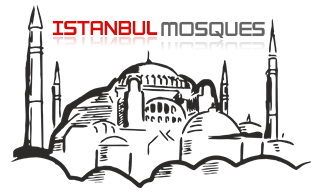
SULEYMANIYE MOSQUE
‘‘If you say “Let's demolish Suleymaniye”, you need two picks and shovels and two labourers.
But if you say, ‘’ Let's build it back, we need a Sinan and a Süleyman.’’
Mehmet Akif Ersoy
These lines, written by one of the most famous poets of the time, tell us about the importance and uniqueness of the Suleymaniye Mosque. It was built by order of Sultan Süleyman the Magnificent and designed by Mimar Sinan, one of the greatest architects in history. Since we cannot bring back either of them, the Suleymaniye Mosque is a one-of-a-kind masterpiece that cannot be rebuilt.
Suleymaniye Mosque was built between 1550 and 1557. Even with today's technology, completing such a masterpiece in just seven years would be a challenge. Mimar Sinan referred to this mosque as his “journeyman’s work,” showing his dedication to continuous improvement and seeing it as a step in his architectural journey. When the mosque was completed, Mimar Sinan wanted Sultan Süleyman the Magnificent to inaugurate it by receiving the keys. However, the Sultan insisted that Sinan himself should do the honors. The mosque was officially opened for worship on October 15, 1557.
Considering the layout of the mosque, it is quite fragmented in terms of space and has a visually strong expression. Its main support system consists of four massive columns, known as “elephant legs.”. hese columns, made of smoothly cut stone, help balance their enormous size with a more refined appearance. Another striking feature of the mosque is the hundreds of windows that illuminate the interior. In addition, oil lamps on thin iron hangers were used for night lighting.
An innovative design element of the mosque is the “soot room” above the entrance. The rising soot from the oil lamps was cleverly directed there by air currents, preventing it from blackening the mosque’s interior. The mosque’s beauty is further enhanced by İznik tiles, especially on the mihrab wall, adding vibrant colors and intricate patterns.
One of the most fascinating details is the use of ostrich eggs. Mimar Sinan discovered that ostrich eggs help keep spiders and insects away, so he placed them among the chandeliers' lamp shades. Decorated with traditional patterns, these eggs not only served a practical purpose but also reflected the mosque’s harmonious approach to nature—creating beauty without harming any living creatures.
The domes cover a large volume of the mosque, creating a wider and more spacious interior. To prevent acoustic issues caused by the dome’s size, special cubes were placed around its perimeter to improve sound quality. These 64 hollow cubes, carefully positioned during construction, not only enhanced acoustics but also reduced the dome’s overall weight. The main dome, supported by two half domes, helps create a balanced and refreshing interior while also adding to the mosque’s impressive exterior. Another key feature of the mosque’s exterior is its four towering minarets. Positioned at the corners where the main building meets the courtyard, these minarets enhance the mosque’s silhouette with their vertical lines and intricate details, making them an essential part of its iconic appearance.
In front of the closed main body of the mosque is a courtyard surrounded by colonnades. At the centre of the courtyard is an elegant fountain with a white marble floor. Verses from the Qur'an are inscribed on the side gates of the courtyard. The most notable inscription is on the grand entrance, known as the crown gate, which features the verse of Shahadah along with the verse: “Indeed, performing prayers is a duty on the believers at the appointed times.” [Qur’an, 4:103].
The Suleymaniye Mosque is one of the most iconic examples of a classical Ottoman complex. Built on one of the hills of Istanbul, the presence of the complex may not be immediately apparent, as the mosque will first attract the attention of those looking at it from a distance. Ottoman complexes were designed to serve the community by combining various buildings to meet different needs.
The Suleymaniye Complex includes tombs, madrasas, schools of different levels, medical madrasas, a hospital, caravanserais, baths, fountains, bazaars, and shops, and These structures are connected by covered streets, creating a vast and functional space. These types of buildings have managed to attract attention in every period by combining the superior design understanding of Ottoman architecture in construction technology and art with many buildings.
The complex also houses the tombs of Sultan Süleyman the Magnificent and his wife, Hürrem Sultan. Since Sultan Süleyman shares his name with Prophet Suleyman (Solomon), references to the prophet can be seen in his tomb. Mimar Sinan had his own tomb built near the mosque, inside the complex. Mimar Sinan's wish to be buried near this mosque shows his special bond with the mosque. Visible from many parts of Istanbul, the Suleymaniye Mosque continues to captivate both visitors and those who admire it from afar.

Leave a Comment